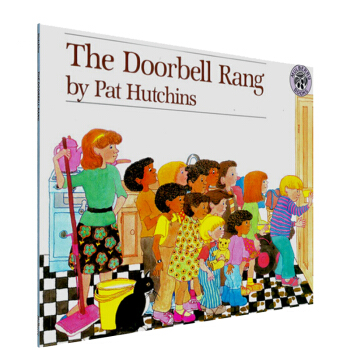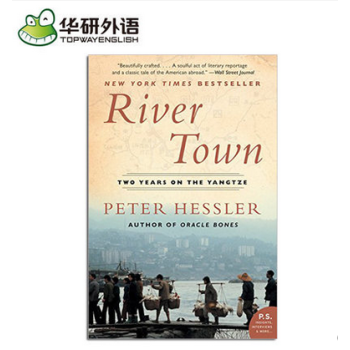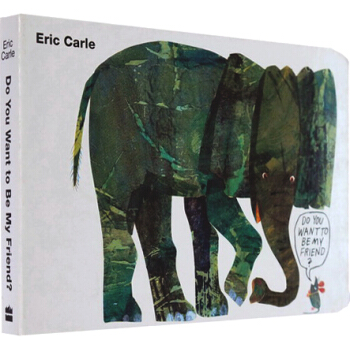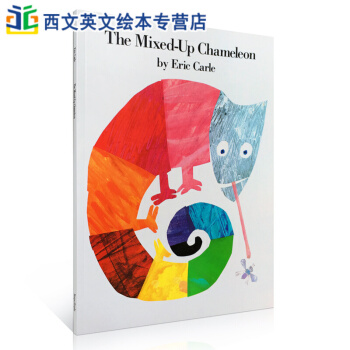![The Story of Buildings: From the Pyramids to the Sydney Opera House and Beyond 英文原版 [精装] [9-12岁]](https://pic.windowsfront.com/19543499/55c47904Ncb42679e.jpg)

具体描述
内容简介
Aspiring architects will be in their element! Explore this illustrated narrative history of buildings for young readers, an amazing construction in itself.We spend most of our lives in buildings. We make our homes in them. We go to school in them. We work in them. But why and how did people start making buildings? How did they learn to make them stronger, bigger, and more comfortable? Why did they start to decorate them in different ways? From the pyramid erected so that an Egyptian pharaoh would last forever to the dramatic, machine-like Pompidou Center designed by two young architects, Patrick Dillon’s stories of remarkable buildings — and the remarkable people who made them — celebrates the ingenuity of human creation. Stephen Biesty’s extraordinarily detailed illustrations take us inside famous buildings throughout history and demonstrate just how these marvelous structures fit together.
作者简介
Patrick Dillon is an architect and historian. He is the author of The Story of Britain from the Norman Conquest to the European Union, a narrative history for children, and of two highly acclaimed history books for adults. On writing The Story of Buildings, he says, "My two favorite things are stories and buildings. Telling stories about buildings is as good as it gets." Patrick Dillon lives in London.Stephen Biesty is the creator of Stephen Biesty’s Incredible Cross-Sections, which has sold more than a million copies worldwide since its publication in 1992. He lives in Somerset, England.
内页插图
精彩书评
Clear explanations of basic building concepts (cantilevers, arches and domes, reinforced concrete) are balanced with discussions of more abstract principles such as symmetry, geometry, and pattern. But the volume is truly set apart by Biesty’s elaborate, meticulously detailed, and clearly labeled drawings (some stretching across two large-format pages plus two half-page fold-outs). ... Biesty here adds a kaleidoscopic yet tightly integrated visual dimension that will transfix readers.—School Library Journal (starred review)
A diverse selection of buildings are highlighted... Working with colored pencil, Biesty uses a gentler line than in his hyperattentive Cross-Sections books, but there’s no loss of detail: you could, if so inclined, count the steps leading up to the Hall of Supreme Harmony in the Forbidden City. Each picture is thoroughly but unobtrusively annotated... The main text has a nice narrative flow that links the buildings and eras together, and Dillon has a gift for evocation as well as explanation. ... [I]ts absorbing pictures and spacious design invite you to start where you like. You’ll go back for more. An index and a timeline, fascinating in its own right, are appended.
—The Horn Book (starred review)
Biesty’s precisely drawn, finely detailed architectural views supply the highlights for this ... survey of homes and prominent buildings through the ages. ... Broad of historical (if not international) scope and with illustrations that richly reward poring over.
—Kirkus Reviews
This large, handsome volume combines broad discussions of architectural history with exceptional drawings of significant buildings from ancient to modern times. ... An English architect, Dillon clearly knows his subject and presents it in a readable way. ... Intricate and precise, Biesty’s colored-pencil drawings offer viewers a good sense of the scale as well as the form and presence of each building. Through his signature cross sections, details of interiors and construction can be seen as well.
—Booklist
The best buildings are more than the sum of their prosaic parts—they are meeting places of imagination and practicality, embodiments of man both as he is and as he aspires to be. It is these rather elusive architectural qualities that Stephen Biesty captures brilliantly in his warm, finely drawn illustrations for "The Story of Buildings." Here, in honey-colored drawings on creamy paper, young readers ages 10-16 (and their parents) can explore famous structures along a timelines from antiquity to the present. ... [A] sympathetic and highly readable chronicle of man's most enduring means of cultural expression.
—The Wall Street Journal
Ambitious... Stephen Biesty supplies his signature cutaways for sixteen of the buildings, and these details, together with truly informative insets, are likely to captivate reader attention.
—Bulletin of the Center for Children's Books
前言/序言
用户评价
这本书简直太令人兴奋了,它让我对世界各地的建筑有了全新的认识!我一直以为建筑就是房子,直到我读了这本书,才发现原来建筑可以如此多姿多彩,如此充满创意。从古老的埃及金字塔,到古希腊的神庙,再到中世纪的城堡,每一座建筑都有它独特的故事和魅力。我特别喜欢书中关于悉尼歌剧院的介绍,那个独特的外形设计,以及它在夜晚闪耀的光芒,都让我觉得它简直就是一件艺术品。这本书也让我了解了不同文化和时代背景下建筑的风格演变,比如中国古代建筑的精巧和西方建筑的宏伟。而且,书中还有很多关于建筑材料和建造技术的介绍,让我对这些伟大的建筑有了更深的理解。我常常会在读完一章后,兴奋地和我的朋友们分享我学到的知识,他们也都被这本书深深吸引了。
评分这本书的编排设计简直太棒了,完全抓住了我们这个年纪孩子的注意力!它不像那些枯燥的历史课本,而是用一种非常有趣的方式来呈现建筑的演变。每一章都聚焦于一个或几个标志性的建筑,从古埃及的奇迹,到古希腊的神庙,再到我们现代看到的摩天大楼。最让我惊喜的是,书里有很多关于不同时期建筑风格的对比和解释,比如罗马建筑的拱形结构,以及伊斯兰建筑的几何图案之美,这些都让我学到了很多我以前从未接触过的知识。而且,书中提到的建筑,很多都是我曾经在电影里、图片里或者旅游节目里见过的,这本书就像一个百科全书,把这些零散的片段联系了起来,让我对它们有了更深入的了解。我尤其喜欢书中关于中国古代建筑的部分,那些飞檐斗拱,以及故宫的宏伟壮丽,都让我觉得非常自豪。它让我意识到,建筑不仅仅是遮风挡雨的场所,更是人类智慧、文化和信仰的体现。
评分这本书简直是为我们这些对世界充满好奇的孩子量身定做的!它用一种非常生动有趣的方式,为我们打开了一扇通往建筑世界的大门。从史前时代那些神秘的巨石建筑,到古埃及的金字塔,再到古希腊和古罗马的宏伟遗迹,每一个章节都充满了惊喜。我尤其喜欢关于中世纪城堡和教堂的介绍,那些高耸的塔楼和精美的雕塑,让我仿佛置身于一个古老的童话世界。这本书还巧妙地将不同地域和文化的建筑风格融合在一起,比如我们看到的中国古代的宫殿,还有神秘的印度寺庙。而且,它不仅仅是介绍了建筑的外观,还讲述了建造这些建筑背后的故事,比如当时人们的生活方式,以及他们对信仰的追求。这本书让我深刻地认识到,建筑不仅仅是石头和砖瓦的堆砌,更是人类文明的结晶,是历史的见证,也是艺术的升华。
评分这本书就像一本魔法书,把我带进了建筑的神奇世界!我一直都对那些高大的、充满历史感的建筑感到好奇,这本书简直满足了我所有的幻想。它从最古老的建筑讲起,比如那些神秘的巨石阵,还有让人惊叹的金字塔,然后一路讲述到现代的创新建筑,比如那个像帆船一样的悉尼歌剧院。我最喜欢的部分是关于古罗马建筑的介绍,那些精密的排水系统和坚固的拱门,让我不得不佩服古人的智慧。书中还提到了许多不同文化背景下的建筑特色,比如印度的泰姬陵,它的美丽和浪漫让人心驰神往。而且,这本书的图片质量非常高,每一张照片都清晰锐利,让我仿佛身临其境。我常常会花很多时间仔细地研究那些建筑的细节,想象当时的人们是如何建造它们的。这本书真的让我对“建筑”这个词有了全新的认识,它不再是简单的房屋,而是承载着历史、文化和梦想的艺术品。
评分这本书简直是一场穿越时空的建筑奇旅!当我翻开它的时候,就被那些精美的插图深深吸引了。每一页都仿佛在诉说着古老的故事,从埃及宏伟的金字塔,到古罗马斗兽场那历经沧桑的石墙,再到哥特式教堂高耸入云的尖顶,每一个细节都被描绘得栩栩如生。我感觉自己就像一个小小探险家,跟随书中的文字和画面,一步步走进了这些伟大的建筑背后。书中对于建筑的起源和演变有着清晰的脉络,让我这个对历史建筑知之甚少的孩子,也能轻松理解它们是如何随着人类文明的发展而变化的。而且,它不仅仅是罗列了一堆名字和年代,而是通过生动有趣的语言,讲述了建造这些建筑的故事,比如工匠们的智慧,以及它们在当时社会扮演的角色。我特别喜欢书里关于中世纪城堡的部分,那些坚固的城墙、狭窄的箭孔,以及高处的瞭望台,都让我脑海里充满了骑士和公主的想象。这本书让我对建筑不再是冰冷的石头和钢筋,而是充满了生命和历史的艺术品。
评分趁着活动入手 等了几天 科普类读物 插画很不错
评分趁着活动入手 等了几天 科普类读物 插画很不错
评分一百多的原版书拿个塑料袋套着就送来了,差评!非常心塞!左边是买的一家第三方原版书,人家一本书也拿纸盒泡沫纸严严实实地包了三层,就一层薄薄的塑料袋,上次买原版书也是这样!差评差评差评!
评分还不错吧贵了点
评分看着很赞!
评分一百多的原版书拿个塑料袋套着就送来了,差评!非常心塞!左边是买的一家第三方原版书,人家一本书也拿纸盒泡沫纸严严实实地包了三层,就一层薄薄的塑料袋,上次买原版书也是这样!差评差评差评!
评分还不错吧贵了点
评分还不错吧贵了点
评分趁着活动入手 等了几天 科普类读物 插画很不错
相关图书
本站所有内容均为互联网搜索引擎提供的公开搜索信息,本站不存储任何数据与内容,任何内容与数据均与本站无关,如有需要请联系相关搜索引擎包括但不限于百度,google,bing,sogou 等
© 2025 book.coffeedeals.club All Rights Reserved. 静流书站 版权所有

![The Princess in Black [平装] [5-8岁] pdf epub mobi 电子书 下载](https://pic.windowsfront.com/19543662/55c4791aN944075c6.jpg)





![英文原版 My Mum 我妈妈 名家Anthony Browne 纸板书[0-5岁] pdf epub mobi 电子书 下载](https://pic.windowsfront.com/10195141620/5b1f261fN10e6b169.jpg)












![The High-Rise Private Eyes #8: The Case of the Desperate Duck (I Can Read, Level 2)高楼侦探:绝望的鸭子案件 [平装] [4-8岁] [高楼中的私家侦探#8: 绝望的鸭子事件] pdf epub mobi 电子书 下载](https://pic.windowsfront.com/19003909/550be534Nffefe900.jpg)